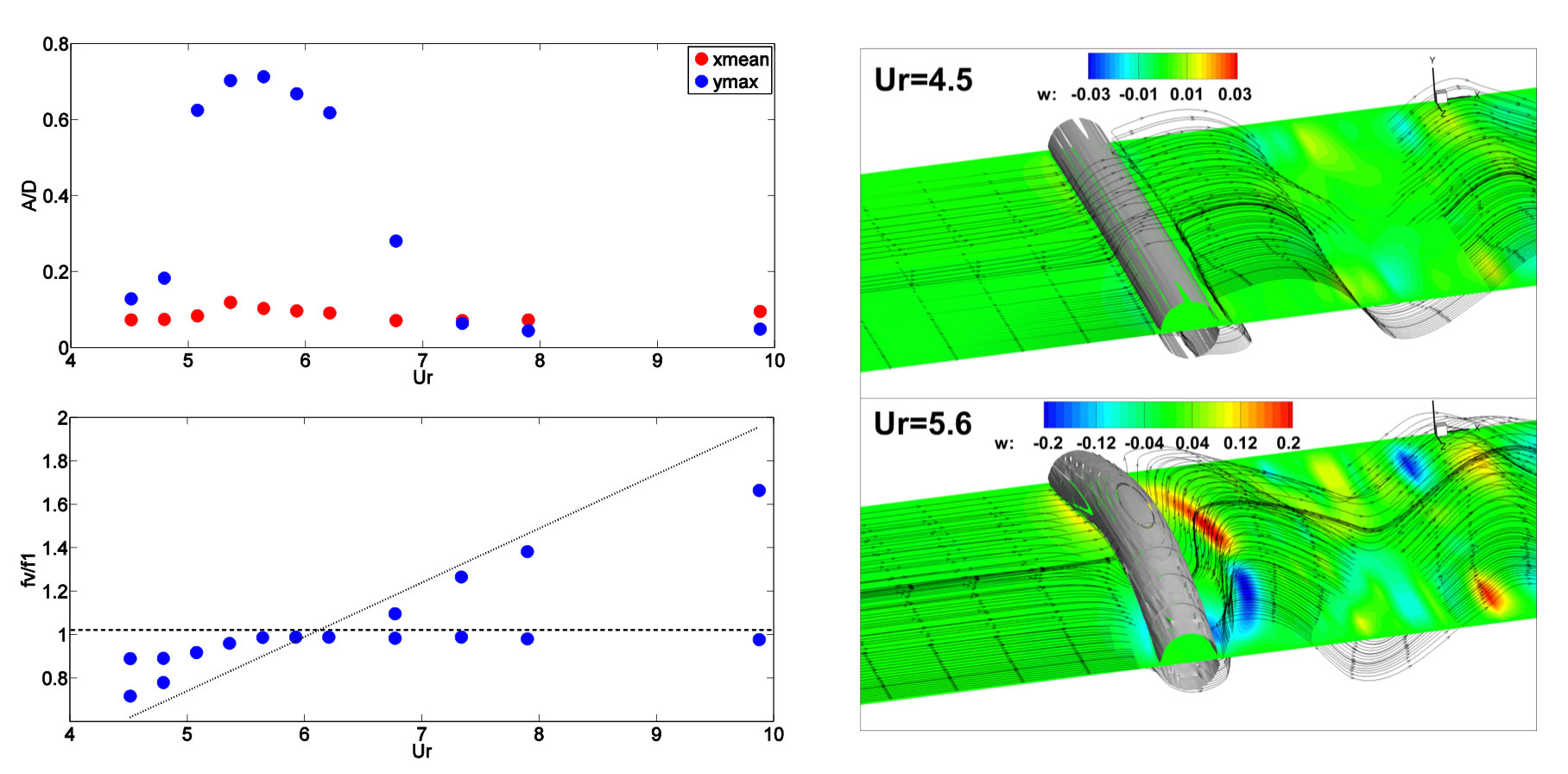Direct Numerical Simulation of Flexible Cylinders
As water flows across a bluff body (i.e. cylindrical object), the object tends to vibrate. This is a result of the flow being unable to stay attached to the body surface and therefore peeling off into swirling vortices. The shedding occurs on alternate sides of the object. Each vortex exerts a force back onto the object, causing the object to move in an oscillatory manner.
A numerical simulaWon tool has been developed to study VIV on flexible cylinders. This tool uses Direct Numerical Simulation (DNS) with Smoothed Profile Method Formulation (SPM). It employs a fixed computational mesh without conformation to the geometry of the particles. The method represents the particles by certain smoothed profiles to construct a body force term added into the Navier–Stokes equations.
Use of this tool provides the advantage of modeling multiple complex shapes. This holds great promise for studying such systems as dual flexible risers or the aforementioned flexible riser+BOP model.

Figure 1. VIV of flexible cylinder by DNS-SPM code. (a) Amplitude of vibrations as a function of the reduced velocity (Ur). (b) Vibration frequency of flexible cylinder with Ur. (c) Sketch of w-velocity contour of flow around flexible cylinder.